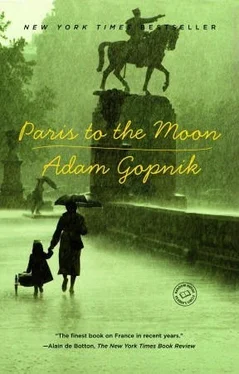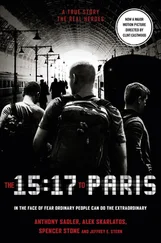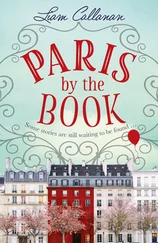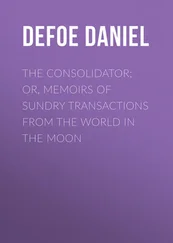and the Italians, I recall, have an odd, all-in-line arrangement. All of them feature that third grounding element to keep the shocks from passing from the surging current directly into the room and the people who live there. Only America remains ungrounded.
To make the transition from country to country, plug to plug, you also need to know more than anyone can—well, anyway, more than I do—about what things have motors and which don’t. (Motors aren’t adaptable, even with adapters. You have to get converters for them that turn out to be big, heavy black poxes — odd, in this day of the streamlined and transistorized—that do something or other to the current.)
I plugged in my Stylewriter Mac printer the third day here to print something out, and as it began to print, it also immediately began to smoke. Disconcerting plumes of flame shot from it, as though it were being executed in Florida. Horrible sight, particularly as it kept on printing even as it destructed, another symbol of the writer’s life. So I had to buy a new one, whose software is all in French. I am learning French computerese: brancher, imprimer, annuler… Even the common language of the bank machine is odd. We got our bank cards from our new bank, but whereas in New York you have to punch out your code—ours was Luke’s birthday—here you are assigned your code by the bank, with no appeals. You are 3431, you are 1676, that is it.
There is a separate language of appliance design in France, which we are learning as we wander, pushing the poussette in and out of the rows on the second floor of the BHV. Things are smaller, but they are also much quieter and more streamlined. In the kitchen, when you branche them, they hum, discreetly, impatiently. They all are slim, white, molded, with the buttons and lights neatly small, rectangular, and inset into the white plastic. The hulking, growling American appliances we had at home, with their freezers on top and their sunset brown faces, all were solid, vast and seemed to imply survivalism . You could go cruising in them. The French appliances, with their blinking lights and set-back press buttons on the front, imply sociability and connection.
It is as if all American appliances dreamed of being cars while all French appliances dreamed of being telephones. The French freezer is, in a French refrigerator, always on the bottom rather than the top and is composed of drawers and secret compartments, like an old writing desk; you are supposed to fill it with culinary billets-doux, little extras, like petits pois, instead of with the next week’s dinner, as you do in an American freezer.
Parisians love telephones, all kinds of telephones. They don’t use them the way that Americans use telephones, but they just love them, the way that Americans love cars. (This is partly because telephones are newly arriving; when we lived here in the early seventies, a year went by, and we still didn’t have a phone.) The cellular phone, which back in New York still seemed to me to be mostly in the hands of real estate agents and salespeople—those who were, in a sense, on call, biddable—is here in everyone’s hands. You walk down the boulevard, and everyone is talking, a phone clutched to the ear. What you never see, though, is someone walking down the street with a Walkman on, as everyone does in New York. (I miss my walks with my Walkman, in fact, probably more than any other single thing about life here so far: the music, the isolation, the sense of life as a sound track, the pure release of it. Nobody here wants to shut the city out. They are talkers, not silent listeners.)
They don’t have answering machines either, or at least don’t rely on them to do all the work of protection and sorting and screening that New Yorkers do. If you call people, and they’re home, they answer; they have the same law-abiding approach to these calls that Americans have to parking. You park where you’re supposed to park, whereas people in Paris will park anywhere. It is not so much that the phone transformed France and the car transformed America as that both fitted right in, as I suppose technologies must, with what people had wanted all along. Not new desires made by new machines but new machines matching the same old needs. The phone replaced the system of pneumatic messages—the pneus— that used to race around Paris, and there is something pneu about them even now: French telephone conversations tend to be sharp, pointy, rather than expansive.
There is an odd, seemingly purposeful looking-glass quality to a lot of the things we have to buy. The Braun coffeemaker with a thermos that we had in New York is available here, but oddly only in black, whereas the one in New York was available only in white.
Luke loves BHV for the music. All day long it plays excited, taped Christmas shopping announcements, backed with appropriate tunes. Some of the tunes we recognize—it plays the Looney Tunes theme, for instance—and some seem vaguely familiar but are hard to name, so we give our own names to them: “The Love Theme from BHV,” “BHV’s Victory at Sea,” and the “BHV Christmas Anthem.” His ears undimmed by fifteen years of the IRT, he can hear them all even over the din of appliance shopping, and when he notices a favorite, he rises from his stroller, a cobra in mittens, and sways solemnly back and forth.
About five days before Christmas, BHV was decked out for the holidays, though, with the strikes shutting down transportation, there was hardly a soul in sight. Twenty years ago there was no Christmas in Paris. Oh, there was a holiday, of course, and even the gaunt, Gaullist figure of Pere Noel, an ascetic and intellectualized version of Santa. But the great American department store potlatch was unknown. All that’s changed beyond recognition now. That central ritual of bountiful capitalism, the department store Christmas, is in late but absurdly full bloom here, and with an American flavor so pronounced that it hardly seems American anymore, just part of an international style. The dome of Printemps, on the boulevard Haussmann, for instance, is this year decorated with stylized Stars and Stripes and life-size figures of Jimmy Dean and Marilyn and dark and Bogie and even Babe Ruth. Now at BHV there are artificial evergreens, and tree decoration departments, and a Santa—get your picture with the old guy—and boughs of evergreen hung everywhere, and artificial snow, even though it never snows in Paris at all. On this afternoon, the “BHV Christmas Anthem” began to rise from every loudspeaker on every floor. Only now, as Luke swayed in his stroller, I could hear it clearly for the first time, loud and ringing through the almost empty store, and I understood at last why it had sounded so oddly familiar. It was the theme from Entertainment Tonight. Maybe there is no Regulon in the Semiosphere after all.
DISTANT ERRORS
(Emisration becomes expatriation, confusion reigns, and serenity Is sought in the Luxembourg Gardens.)
Late last year the French government assembled a committee to choose a name for the vast new stadium that’s being built in a Paris suburb. The committee included an actor, an “artiste,” some functionaries, and even a few athletes. It took a long time deliberating over its choice. Names were submitted: Some people liked the idea of naming the stadium after Verlaine or Saint-Exup ery, and lots of others liked the idea of calling it Le Stade Platini, after Michel Platini, the great French soccer player. At last, in December, the committee announced that it had come to a decision, and the government decided to broadcast the verdict on television. The scene was a little like the end of the Simpson trial: the worried-looking jurors filing to their seats, the pause as the envelope was handed to the minister of youth and sports, the minister clearing his throat to read the decision to the nation. The stadium that would represent France to the world, he announced, would be called (long, dramatic pause) Le Stade de France. The French Stadium. “Banal and beautiful at the same time,” one journalist wrote. “Obvious and seductive. Timeless and unalterable.”
Читать дальше












